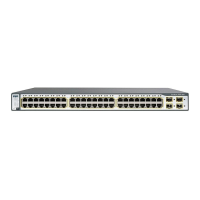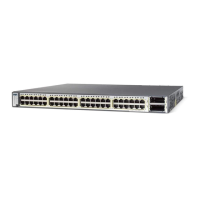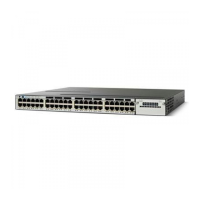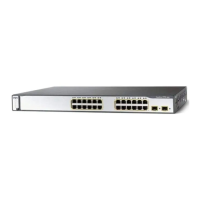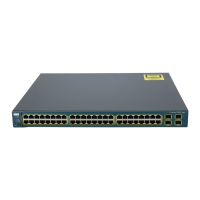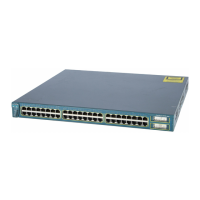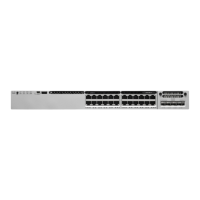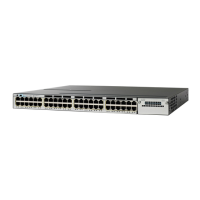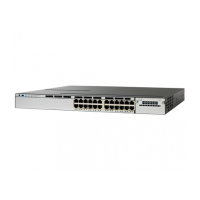2-379
Catalyst 3750 Metro Switch Command Reference
OL-9645-10
Chapter 2 Catalyst 3750 Metro Switch Cisco IOS Commands
random-detect dscp
Usage Guidelines WRED is a congestion-avoidance mechanism that slows traffic by randomly dropping packets when
congestion exists. WRED reduces the chances of tail drop by selectively dropping packets when the
egress port begins to show signs of congestion. By dropping some packets early rather than waiting until
the queue is full, WRED does not drop large numbers of packets at once.
Use the random-detect dscp command only in a hierarchical policy map attached to an ES port. You
can use this command only in class-level classes.
You must configure the bandwidth or the shape policy-map class configuration command before you
configure either the queue-limit or the random-detect policy-map class configuration command in a
class policy.
You can define a class policy to use either tail drop or WRED packet drop by using either the queue-limit
policy-map class configuration command or the random-detect policy-map class configuration
command, respectively. You cannot use the queue-limit and random-detect commands in the same
class policy, but they can be used in two class policies in the same policy map.
You cannot use the bandwidth, queue-limit, random-detect, and the shape policy-map class
configuration commands with the priority policy-map class configuration command in the same class
within the same policy map. However, you can use these commands in the same policy map.
You must enter the random-detect dscp-based command before specifying the values with the
random-detect dscp dscp min-threshold max-threshold mark-prob-denominator command.
For the dscp dscp option, you can enter a mnemonic name for a commonly used value for assured
forwarding (AF) code points, expedited forwarding (EF) code points, and class selector (CS) values. For
example, you can enter the dscp af11 command, which is the same as entering the dscp 10 command.
For a list of supported mnemonics, enter the random-detect dscp ? command to see the command-line
help strings.
The AF code points enables a domain to offer four different levels (four different AF classes) of
forwarding assurances for IP packets received from other (such as customer) domains. Each one of the
four AF classes is allocated a certain amount of forwarding services (buffer space and bandwidth).
Within each AF class, IP packets are marked with one of three possible drop-precedence values (binary
2[010], 4[100], or 6[110]), which exist as the three lowest bits in the DSCP header. In congested network
environments, the drop-precedence value of the packet determines the importance of the packet within
the AF class. Packets with higher drop-precedence values are discarded before packets with lower
drop-precedence values. The upper three bits of the IP DSCP value determine the AF class; the lower
three bits determine the drop probability.
The EF code point is usually used to mark high-priority, time-sensitive data. The EF code point marking
is equal to the highest IP precedence value; therefore, the EF code point is always equal to precedence
value 7.
The CS values are equal to IP precedence values (for instance, cs1 is the same as IP precedence 1).
Set the min-threshold value high enough to maximize the link usages. If the minimum threshold is too
low, packets might be dropped unnecessarily, and the transmission link is not fully used. The difference
between the maximum threshold and the minimum threshold should be large enough to avoid global
synchronization of TCP hosts. This can occur as multiple TCP hosts reduce their transmission rates. If
the difference between the maximum and minimum thresholds is too small, many packets might be
dropped at once, resulting in global synchronization.
To return to policy-map configuration mode, use the exit command. To return to privileged EXEC mode,
use the end command.
Table 2-15 lists the default settings used by the random-detect dscp command for the DSCP value
specified. The last row of the table (the row labeled default) shows the default settings used for any
DSCP value not specifically shown in the table.

